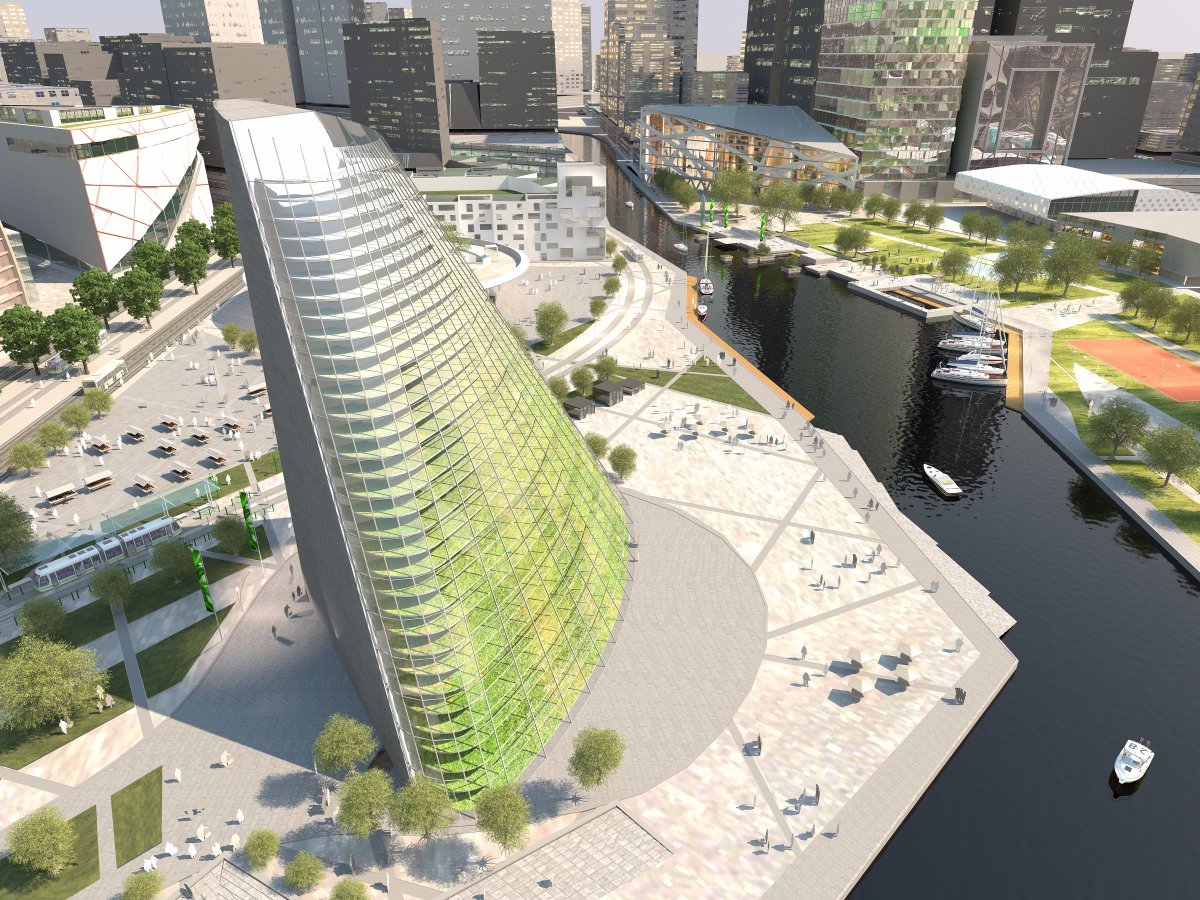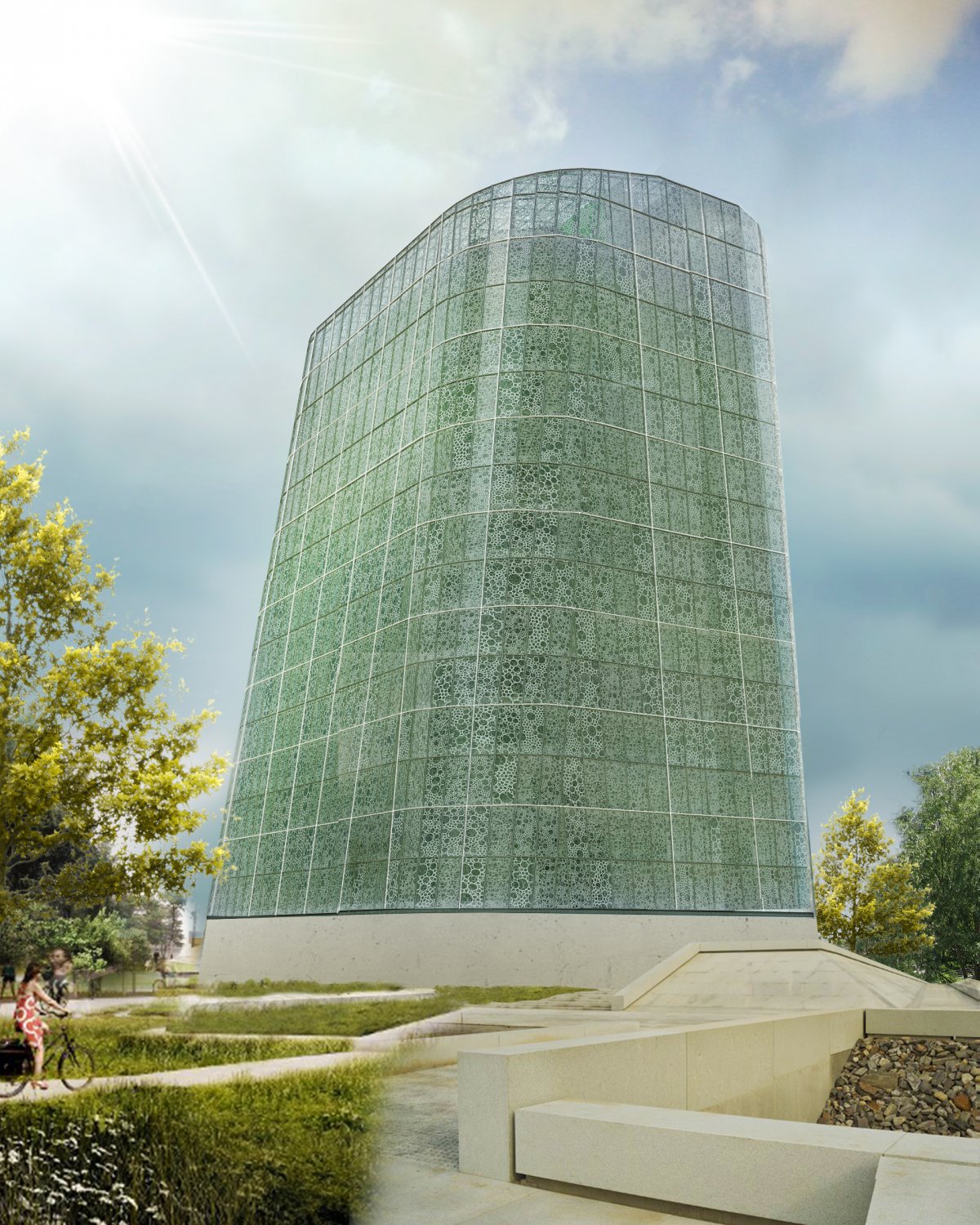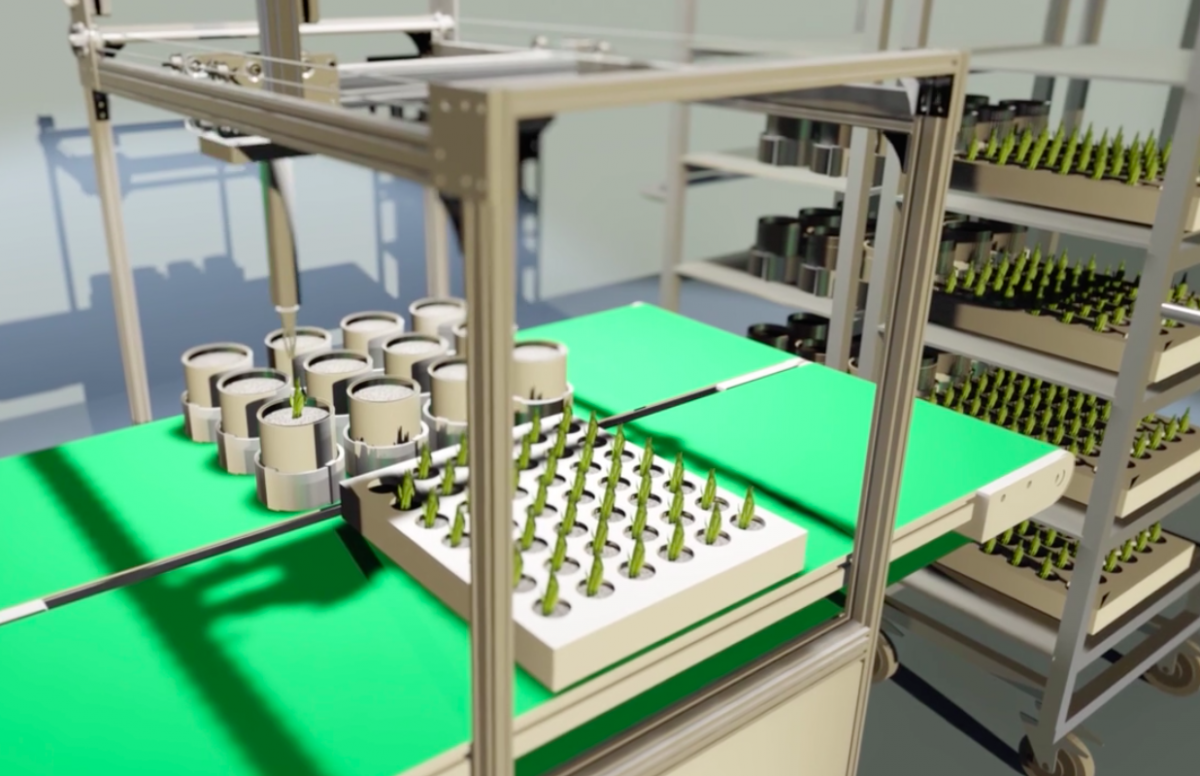
From rooftop gardens to “sponge city” architecture, natural elements are finding their way into city buildings around the world. This is helping to alleviate the effects of flooding, providing food for locals, and even improving air quality. As populations swell within congested urban areas, it will become more challenging to make locally-produced, fresh food available. This is why Plantagon, a Swedish food-tech company, is proposing the idea of “plantscrapers.”

Plantagon is building the first of these in Linköping, Sweden. These futuristic, green skyscrapers (or “plantscrapers”) are simply large buildings that contain massive indoor farms. The project, which started in 2012, should be completed and ready to open by 2020.

This “plantscraper” will be called The World Food Building, and all of its plants will be grown hydroponically — meaning the produce grown in the skyscraper’s farms will take root in a nutrient-rich, water-based solution without any soil. To allow for optimum success, this growth will be controlled almost entirely autonomously: everything from water to nutrition, sunlight, temperature, and air quality will be measured and controlled autonomously through a complex system.

This building will cost $40 million to construct, but you can’t put a price on the long-term payoff: a single building that will be capable of feeding over 5,000 people every year. It’s also a sustainable and local solution, cutting out wasteful transport costs and saving energy while providing quality, healthy produce to urban areas that may not have widespread, reliable access.

We’ll have to wait and see if The World Food Building will deliver on its promises, though. If the launch is successful, then perhaps other cities will follow suit. As populations increase and resources become increasingly scarce, creative solutions like “plantscapers” could help keep our cities (and our species) flourishing.